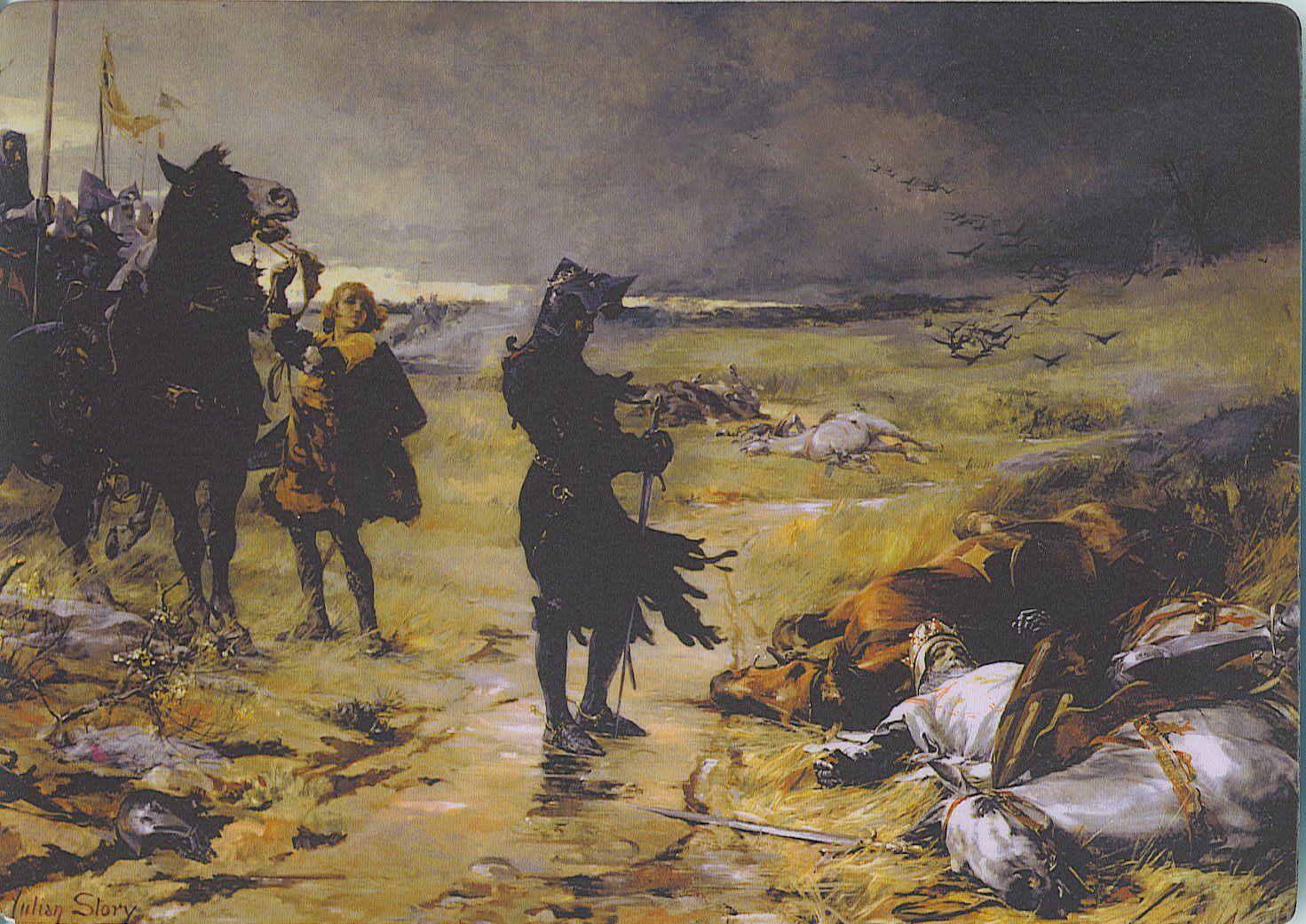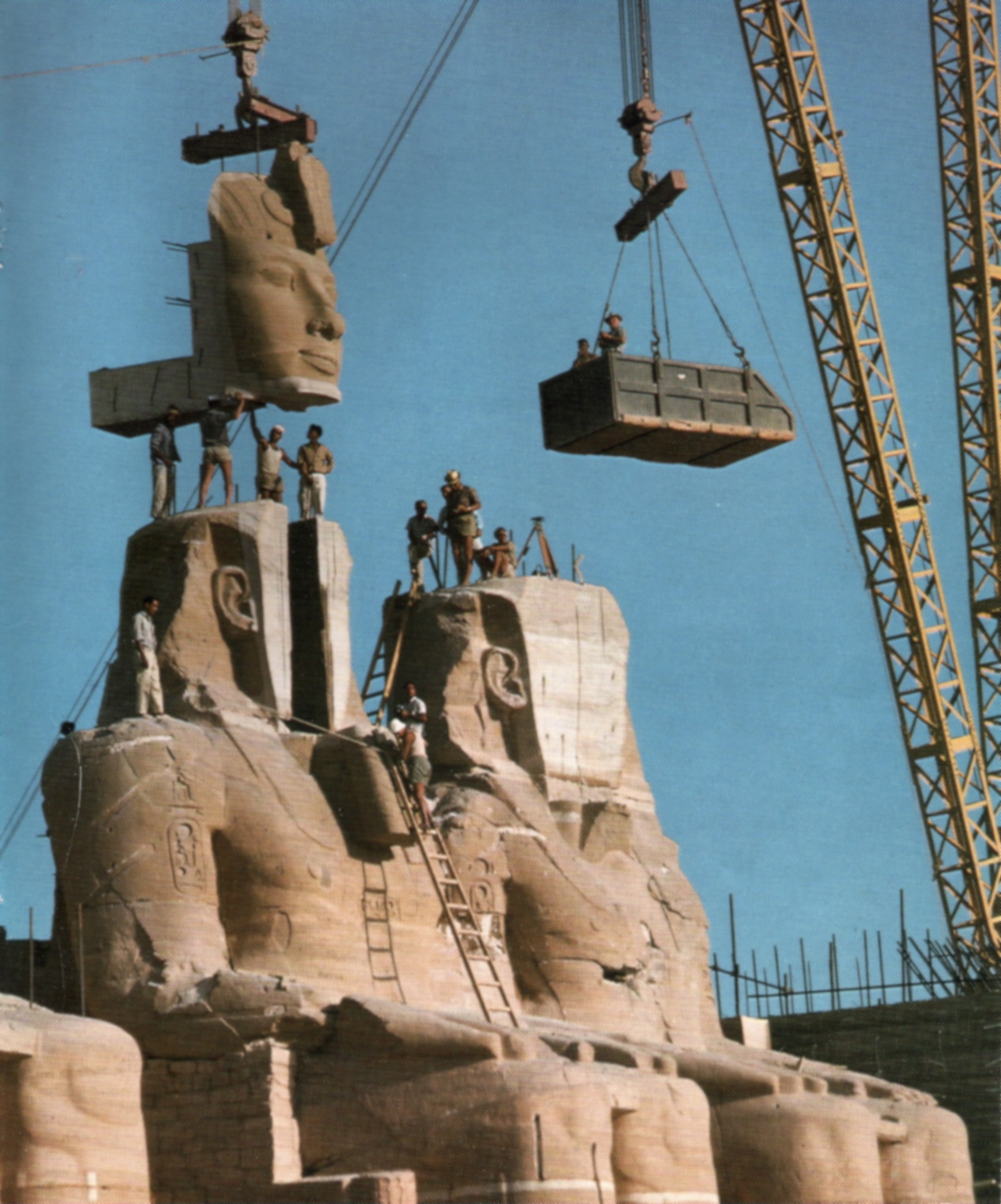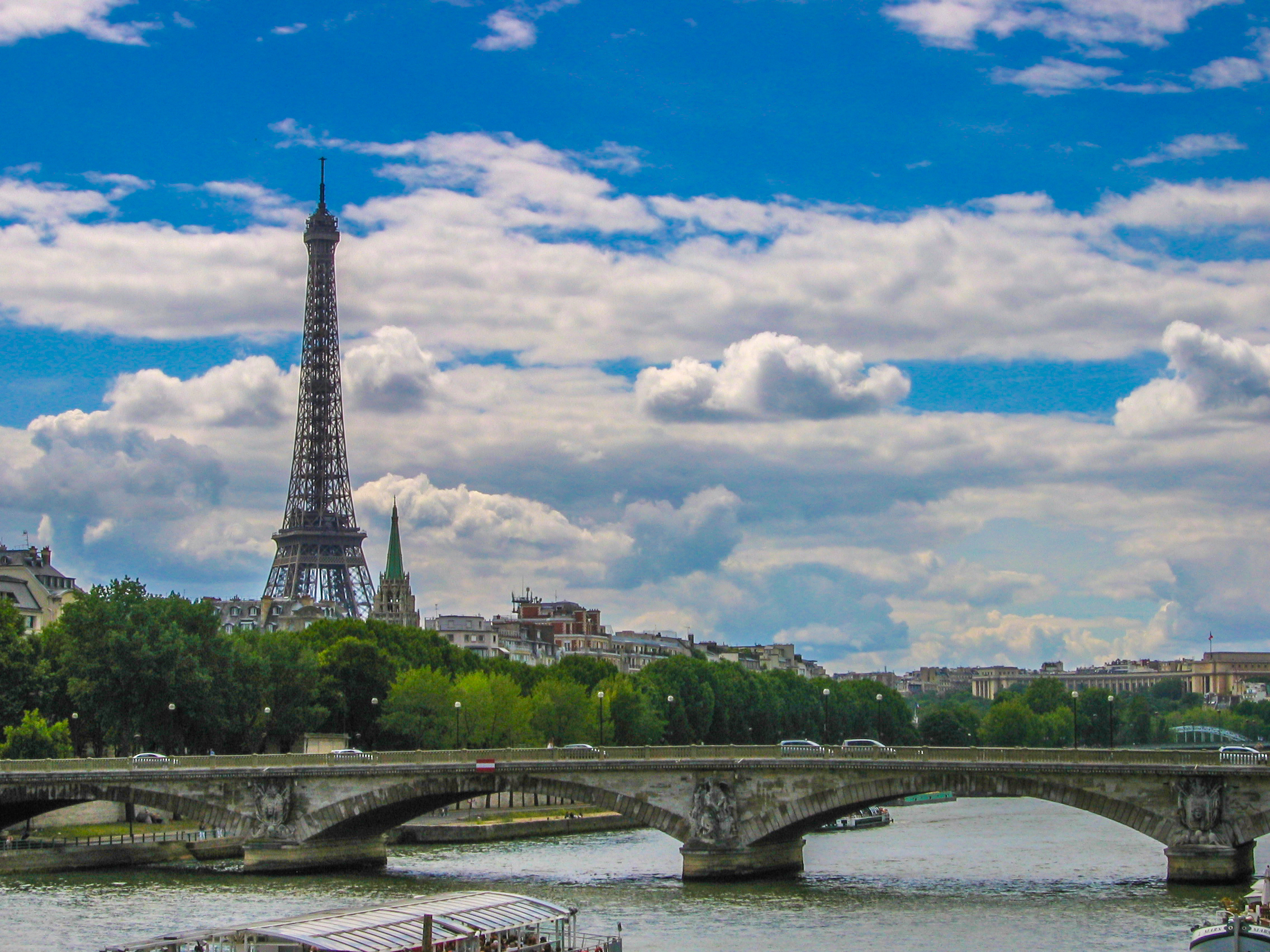|
Ernest Wadsworth Longfellow
Ernest Wadsworth Longfellow (1845–1921) was an American artist in Boston, Massachusetts, and New York. He was the son of Henry Wadsworth Longfellow. Biography Ernest Longfellow was born in Cambridge, Massachusetts, and raised at Craigie House. He was the second of six children, including his younger sister Alice Mary Longfellow. Educated at Harvard College, he passed the winter of 1865 and '66 in Paris in work and study, and the summers of 1876 and '77 in Villiers-le-Bel under Couture.Clement and Hutton. 1879 He married Harriet "Hattie" Spelman in 1868. An 1874 newspaper gossiped about him: "Ernest Longfellow, the son of the poet, is described as a slender, delicate young man, an artist of talent, great at ten-pins, and tip-top at gunning." "His professional life has been spent in Boston, with frequent visits to Europe." In the 1870s he kept a studio on West Street. He exhibited at the National Academy of Design in 1871 and 1875; the Williams & Everett gallery in Bost ... [...More Info...] [...Related Items...] OR: [Wikipedia] [Google] [Baidu] |
Julian Russell Story
Julian Russell Story (September 8, 1857 – February 24, 1919) was an American painter. Early life Story was born on September 8, 1857, in Walton-on-Thames, Surrey, to American parents. He was the youngest child of sculptor William Wetmore Story and Emelyn (née Eldredge) Story. Among his siblings was brother Thomas Waldo Story, also a well known sculptor, and sister, Edith Marion (née Story), Marchesa Peruzzi di Medici, the wife of Marquess Simone Peruzzi di Medici. During his stays in Rome, he became close with the Italian painter Antonio Mancini, who painted him twice. Today, one of those portraits is in the Lukas Charles Collection He was educated at Eton College, Eton and Brasenose College, Oxford, Brasenose College, Oxford University, England. Personal life In 1891, Story was married to the renowned American soprano Emma Eames, the daughter of an international lawyer. Eames was born in Shanghai, China, and raised in Portland, Maine, Portland and Bath, Maine. They divorce ... [...More Info...] [...Related Items...] OR: [Wikipedia] [Google] [Baidu] |
Museum Of Fine Arts, Boston
The Museum of Fine Arts (often abbreviated as MFA Boston or MFA) is an art museum in Boston, Massachusetts. It is the list of largest art museums, 20th-largest art museum in the world, measured by public gallery area. It contains 8,161 paintings and more than 450,000 works of art, making it one of the most comprehensive collections in the Americas. With more than 1.2 million visitors a year, it is the List of most-visited art museums, 79th-most-visited art museum in the world . Founded in 1870 in Copley Square, the museum moved to its current Fenway–Kenmore, Fenway location in 1909. It is affiliated with the School of the Museum of Fine Arts at Tufts. History 1870–1907 The Museum of Fine Arts was founded in 1870 and was initially located on the top floor of the Boston Athenæum. Most of its initial collection came from the Athenæum's Art Gallery. In 1876, the museum moved to a highly ornamented brick Gothic Revival architecture, Gothic Revival building designed by John H ... [...More Info...] [...Related Items...] OR: [Wikipedia] [Google] [Baidu] |
19th-century American Painters
The 19th century began on 1 January 1801 (represented by the Roman numerals MDCCCI), and ended on 31 December 1900 (MCM). It was the 9th century of the 2nd millennium. It was characterized by vast social upheaval. Slavery was abolished in much of Europe and the Americas. The First Industrial Revolution, though it began in the late 18th century, expanded beyond its British homeland for the first time during the 19th century, particularly remaking the economies and societies of the Low Countries, France, the Rhineland, Northern Italy, and the Northeastern United States. A few decades later, the Second Industrial Revolution led to ever more massive urbanization and much higher levels of productivity, profit, and prosperity, a pattern that continued into the 20th century. The Catholic Church, in response to the growing influence and power of modernism, secularism and materialism, formed the First Vatican Council in the late 19th century to deal with such problems and confirm ce ... [...More Info...] [...Related Items...] OR: [Wikipedia] [Google] [Baidu] |
19th Century In Boston
19 (nineteen) is the natural number following 18 and preceding 20. It is a prime number. Mathematics Nineteen is the eighth prime number. Number theory 19 forms a twin prime with 17, a cousin prime with 23, and a sexy prime with 13. 19 is the fifth central trinomial coefficient, and the maximum number of fourth powers needed to sum up to any natural number (see, Waring's problem). It is the number of compositions of 8 into distinct parts. 19 is the eighth strictly non-palindromic number in any base, following 11 and preceding 47. 19 is also the second octahedral number, after 6, and the sixth Heegner number. In the Engel expansion of pi, 19 is the seventh term following and preceding . The sum of the first terms preceding 17 is in equivalence with 19, where its prime index (8) are the two previous members in the sequence. Prime properties 19 is the seventh Mersenne prime exponent. It is the second Keith number, and more specifically the first Keith prim ... [...More Info...] [...Related Items...] OR: [Wikipedia] [Google] [Baidu] |
1921 Deaths
Events January * January 2 ** The Association football club Cruzeiro Esporte Clube, from Belo Horizonte, is founded as the multi-sports club Palestra Italia by Italian expatriates in First Brazilian Republic, Brazil. ** The Spanish liner ''Santa Isabel'' breaks in two and sinks off Villa Garcia, Mexico, with the loss of 244 of the 300 people on board. * January 16 – The Marxist Left in Slovakia and the Transcarpathian Ukraine holds its founding congress in Ľubochňa. * January 17 – The first recorded public performance of the illusion of "sawing a woman in half" is given by English stage magician P. T. Selbit at the Finsbury Park Empire variety theatre in London. * January 20 – British K-class submarine HMS K5, HMS ''K5'' sinks in the English Channel; all 57 on board are lost. * January 21 – The full-length Silent film, silent comedy drama film ''The Kid (1921 film), The Kid'', written, produced, directed by and starring Charlie Chaplin (in his ... [...More Info...] [...Related Items...] OR: [Wikipedia] [Google] [Baidu] |
1845 Births
Events January–March * January 1 – The Philippines began reckoning Asian dates by hopping the International Date Line through skipping Tuesday, December 31, 1844. That time zone shift was a reform made by Governor–General Narciso Claveria on August 16, 1844, in order to align the local calendars in the country with the rest of Asia as trade interests with Imperial China, Dutch East Indies and neighboring countries increased, after Mexico became independent in 1821. The reform also applied to Caroline Islands, Guam, Marianas Islands, Marshall Islands, and Palau as part of the Captaincy General of the Philippines. * January 10 – Elizabeth Barrett receives a love letter from the younger poet Robert Browning; on May 20, they meet for the first time in London. She begins writing her ''Sonnets from the Portuguese''. * January 23 – The United States Congress establishes a uniform date for federal elections, which will henceforth be held on the first Tuesday after t ... [...More Info...] [...Related Items...] OR: [Wikipedia] [Google] [Baidu] |
Peabody & Stearns
Peabody & Stearns was a premier architectural firm in the Eastern United States in the late 19th century and early 20th century. Based in Boston, Massachusetts, the firm consisted of Robert Swain Peabody (1845–1917) and John Goddard Stearns Jr. (1843–1917). The firm worked on a variety of designs but is closely associated with shingle style. With addition of Pierce P. Furber, presumably as partner, the firm became Peabody, Stearns & Furber.Out of 32 NRHP entries listing "Peabody" and "Stearns" in the NRIS database, just one (Security Building) also includes "Furber". The firm was later succeeded by W. Cornell Appleton, one of the Peabody & Stearns architects, and Frank Stearns, son of Frank, as Appleton & Stearns. Works Georgia * Plum Orchard (George L. Carnegie House), Cumberland Island (1898) * Stafford Place (William Carnegie House), Cumberland Island (1901) * Greyfield (Margaret Carnegie Ricketson House), Cumberland Island (1901) Maine * York Hall (William D. Sew ... [...More Info...] [...Related Items...] OR: [Wikipedia] [Google] [Baidu] |
Abu Simbel Temples
Abu Simbel is a historic site comprising two massive rock-cut temples in the village of Abu Simbel (), Aswan Governorate, Upper Egypt, near the border with Sudan. It is located on the western bank of Lake Nasser, about southwest of Aswan (about by road). The twin temples were originally carved out of the mountainside in the 13th century BC, during the 19th Dynasty reign of the Pharaoh Ramesses II. Their huge external rock relief figures of Ramesses II have become iconic. His wife, Nefertari, and children can be seen in smaller figures by his feet. Sculptures inside the Great Temple commemorate Ramesses II's heroic leadership at the Battle of Kadesh. The complex was relocated in its entirety in 1968 to higher ground to avoid it being submerged by Lake Nasser, the Aswan Dam reservoir. As part of International Campaign to Save the Monuments of Nubia, an artificial hill was made from a domed structure to house the Abu Simbel Temples, under the supervision of a Polish ... [...More Info...] [...Related Items...] OR: [Wikipedia] [Google] [Baidu] |
Seine Ca1880 ByErnestLongfellow MFABoston
The Seine ( , ) is a river in northern France. Its drainage basin is in the Paris Basin (a geological relative lowland) covering most of northern France. It rises at Source-Seine, northwest of Dijon in northeastern France in the Langres plateau, flowing through Paris and into the English Channel at Le Havre (and Honfleur on the left bank). It is navigable by ocean-going vessels as far as Rouen, from the sea. Over 60 percent of its length, as far as Burgundy, is negotiable by large barges and most tour boats, and nearly its whole length is available for recreational boating; excursion boats offer sightseeing tours of the river banks in the capital city, Paris. There are 37 bridges in Paris across the Seine (the most famous of which are the Pont Alexandre III and the Pont Neuf) and dozens more outside the city. A notable bridge, which is also the last along the course of the river, is the Pont de Normandie, the ninth longest cable-stayed bridge in the world, which links Le ... [...More Info...] [...Related Items...] OR: [Wikipedia] [Google] [Baidu] |
Luca Giordano
Luca Giordano (18 October 1634 – 3 January 1705) was an Italian late-Baroque painter and printmaker in etching. Fluent and decorative, he worked successfully in Naples, Rome, Florence, and Venice, before spending a decade in Spain. Early life and training Born in Naples, Giordano was the son of the painter Antonio Giordano. In around 1650 he was apprenticed to Giuseppe Ribera, Ribera on the recommendation of the List of viceroys of Naples, viceroy of Naples and his early work was heavily influenced by his teacher. Like Ribera, he painted many half-length figures of philosophers, either imaginary portraits of specific figures, or generic types. He acquired the nickname ''Luca fa presto'', which translates into "Luca paints quickly." His speed, in design as well as handiwork, and his versatility, which enabled him to imitate other painters deceptively, earned for him two other epithets, "The Thunderbolt" (''Fulmine'') and "The Proteus" of painting. Following a period ... [...More Info...] [...Related Items...] OR: [Wikipedia] [Google] [Baidu] |
John Constable
John Constable (; 11 June 1776 – 31 March 1837) was an English landscape painter in the Romanticism, Romantic tradition. Born in Suffolk, he is known principally for revolutionising the genre of landscape painting with his pictures of Dedham Vale National Landscape, Dedham Vale, the area surrounding his home – now known as "Constable Country" – which he invested with an intensity of affection. "I should paint my own places best", he wrote to his friend John Fisher in 1821, "painting is but another word for feeling". Constable's most famous paintings include ''Wivenhoe Park (painting), Wivenhoe Park'' (1816), ''The Vale of Dedham (painting), Dedham Vale'' (1828) and ''The Hay Wain'' (1821). Although his paintings are now among the most popular and valuable in Art of the United Kingdom, British art, he was never financially successful. He was elected to the Royal Academy of Arts at the age of 52. His work was embraced in France, where he sold more than in his native Englan ... [...More Info...] [...Related Items...] OR: [Wikipedia] [Google] [Baidu] |
Jacopo Bassano
Jacopo Bassano (c. 1510 – 14 February 1592), known also as Jacopo dal Ponte, was an Italian painter who was born and died in Bassano del Grappa near Venice, and took the village as his surname. Having trained in the workshop of his father, Francesco the Elder, he painted mostly religious paintings, landscapes, and genre scenes. Indeed, he often treated biblical themes in the manner of rural genre scenes, representing peasants, animals, and the agrarian landscape with great accuity. Bassano's pictures were very popular in Venice and, eventually, throughout Europe. His four sons: Francesco Bassano the Younger, Giovanni Battista da Ponte, Leandro Bassano, and Girolamo da Ponte, also became artists and followed him closely in style and subject matter. Life Jacopo Bassano was born around 1510 in the town of Bassano del Grappa, located about 65 km from the city of Venice. His father, Francesco il Vecchio, was a locally successful painter who had established a family worksh ... [...More Info...] [...Related Items...] OR: [Wikipedia] [Google] [Baidu] |









